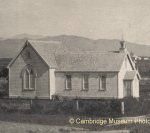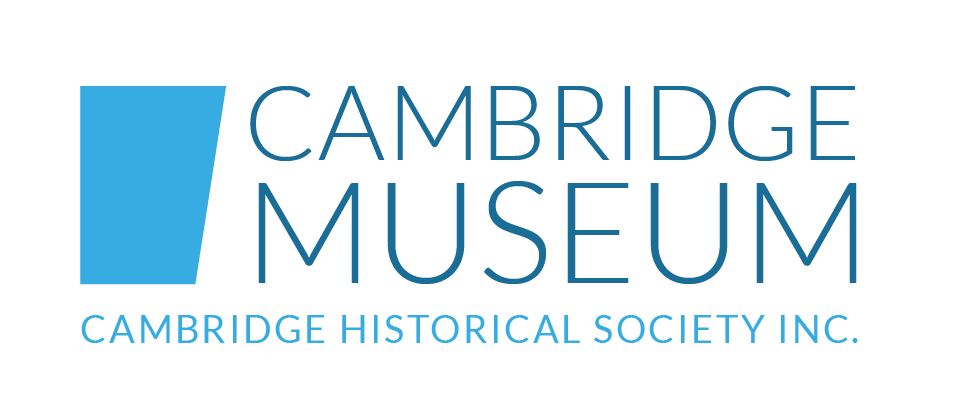Learn Ako
Fun learning experiences for school visits, classroom sessions, heritage walks and for families at home.
Cambridge Explore
Churches

View “Heritage Walk – Churches” in a larger map.
We recommend you view these Google maps in satellite or map mode to access information on the buildings or sites, and street view gives their location.
We hope you enjoy this walk. Click here for a printable brochure to take with you.
1. Wesleyan
The Wesleyans built a Chapel in Chapel (Anzac) Street at the beginning of 1868 and extensions were needed not long after. This was the first chapel erected in the Wesleyan Waikato circuit, and the first religious structure for Cambridge. (The building was later sold for £300 and used as a dance studio. In 1905 it was finally pulled down to make way for ‘Kennilworth’ Boarding House.)
In 1871 the Wesleyans also built a chapel almost opposite the Pukerimu cemetery and in 1882 they built in Leamington.
The name of Chapel Street was changed to Anzac Street in 1916.
2. Catholic
The 3rd Waikato Militia which was stationed in Cambridge in 1864 had 3 officers and 301 men of the Catholic faith. A petition was supported by Dr Seth Sam and signed by John N Miller, George McCann, James Nelson and Arch Clements to ask the government for 15,000 feet of timber to build a church. The petition was successful but the timber disappeared!
In 1871 the Catholics bought an acre of land and building from Stuart Newall and by the time Rev Golden, the Waikato Priest, arrived he recorded – ‘On a fine elevation over the town of Cambridge I found a quaint and pathetic apology for a church. It was very small and unsightly and had no window, except one over the little altar. This let in the rain, which blackened a wall that never knew ornamentation, or any lining, except scrim behind the altar. The roof sagged inward from each side. The building was never erected for a church, but served as a post office in earlier days. It would accommodate 40 or 50 adults at most, and was uncomfortably packed at service. The site was excellent, which was one most helpful feature of the situation. Later on we purchased another acre beside the then existing church section.’
A new church, 50′ x 25′ and built by Messrs Simms & Co, was opened 24 January 1878 at the cost of £560. Then in 1881 a Presbytery was built on the additional 1 acre (bought for £50), but this burnt down when the National Hotel caught fire in 1912.
W G Care built the new ferro-concrete Presbytery in 1914 for £900.
Erection of an up to date brick church in a Romanesque style replaced the old building in 1926. It was built by Speight Pearce Nicoll & Davys for £2975 from the plans of architect John E Chitty. The brick sanctuary and offices were added to the front of the church in 1959 and in 1980 extensions to the church accommodated 100 more parishioners. Also the entrance was moved and a courtyard created. Then in 1988 the Parish Meeting Room was built.
3. Presbyterians
The first services for the Presbyterians were held in the Wesleyan Chapel in Chapel (Anzac) Street. Then in 1873 the Anglicans opened St Andrews church holding fortnightly services alternating with the Presbyterians.
At the beginning of 1878 the Presbyterians built an ‘elegant little structure with ornamental spire’ (Waikato Times) in Victoria Street. Moved to the side, it later served as a hall until removed to make way for the Peace Memorial Hall built in 1922. (Two rooms were built at the back of the hall in 1908 for £111 9/- and a further three rooms were built in 1919, to meet the demands of the young people’s work.)
The foundation stone of the present building was laid on 2 March 1898 by Rev William Evans, and was opened three months later on 22 June at a cost of £813 6/11d. A typical Gothic style in kauri and rimu, this building was built to comfortably seat 250 parishioners by J Lye & Sons from designs by architect Mr E Bartley. (It was the first public building in the district to be illuminated by acetylene gas.)
F C Daniel was architect to changes to the church in 1926.
The Presbyterian and Methodist churches united in 1975 after an arsonist razed the Methodist church. The Trinity St Pauls Union church has been built in its place on the corner of Queen and Bryce Streets and the old Presbyterian church building was sold to become the Cambridge Country Store.
In 1983 the Memorial Seat made from Hinuera stone, was erected to commemorate over 100 years of worship by the Trinity Presbyterian congregation.
The Presbyterian church building still brings prestige to Cambridge, majestically restored in 2016 by the Good George Brewing Company who purchased the building for it’s Cambridge chain – Good Union.
4. Anglican
St Andrew’s Church of England has a copper-sheathed spire reaching 33 metres which is not just ornamental. It contains a peel of six bells (installed in 1884) which are still hand rung on special occasions by a guild of bell ringers.
In 1881 the church was built of heart kauri, from the plans of E Mahoney & Son, by W G Connolly for £1570. The whole town had a holiday when it was consecrated on 31 August 1881.
The first resident Vicar was Reverend William Willis who arrived in 1878 and stayed for 34 years. He started his working life as a carpenter and became Archdeacon in 1882.
Many beautiful stained glass windows have been added to the church as memorials – one such window is in memory of the Archdeacon and his wife Mary Willis.
The first St Andrews Church (at the rear and incorporated into the Parish Centre in 1983) was built in 1873 – the oldest surviving building in Cambridge . It was designed by David Richardson and Phillip Cooper’s tender of £290 was accepted for the construction. This church, originally with a steeple and bell, had been consecrated on 14 April 1873.
The Parish Hall was completed in the depression times of 1931 through the money-raising efforts of Mrs Sarah McCullagh and the work of the Ladies Guild. It was built by Speight Pearce Nicoll & Davys from the plans of T S Cray for £2160 and consists of rough cast reinforced concrete with ornamental buttresses and panels. The windows are diamond leadlights and above the front door, on the spandrel, is designed the Arms of the Diocese and St Andrew’s Cross on shields.
Trees of interest in the church grounds include a beech, oak and 2 cypress (the seeds of these trees were brought back from the Garden of Gethsemane in 1956, raised to seedlings and then planted beside the hall). There is also a very old camellia pilada planted about the time the church was established.
5. Baptist
It was 1881 when Baptists in Cambridge began monthly services and weekly Bible readings. Twenty-five followers in 1882 decided to form a church and their Tabernacle (as their church was called) was designed along the same lines as the one in Auckland.
It was built in Thornton Road in 1883 for £400 and could seat 200 people. Ten years later in 1893 it was sold to the Oddfellows Lodge and moved to Victoria Street. In reference to the move the Waikato Times reported, ‘He [Potterton] has disappointed quite a few ‘croakers’ who predicted the building would come to grief whilst in transit.’ (When the Oddfellows sold the building, it became the Alexandra Hall. T F Richards then bought it for his Grocery Store until it burnt down in 1935.)
The Baptists continued with ‘cottage meetings’ and the church was revived in 1910 with services held in the Waikato Farmers’ Club Rooms and the YMCA in Lake Street. In 1912 they built again – this time in Queen Street for £1000 from the plans of C E Daniell. Then in 1983 the present complex was built and the former building demolished in 1991 to make way for more car parking.
6. Methodist
When the Methodists (Weslyans) laid the foundation stone for their new church on 11 September 1883, talks were being held around New Zealand with regards to joining the various Methodists churches together.
The opening ceremony, on their Queen Street property next to the parsonage, was 5 March 1884. Rev Len Shapcott in his booklet ‘A Great Cloud of Witnesses’ says, ‘A large gathering of town and country residents of all denominations, assembled for the occasion. Cambridge observed the day as a half holiday and all the leading places of business were closed from 2pm. The weather was perfectly fine and this added to the gladness of the occasion.’
Primitive Methodists arrived in the Cambridge district in 1904 and by 1913 the two branches were joined together. At this time a new parsonage was also built on the Queen Street property.
The Methodist Church was burnt by an arsonist in 1970 along with St Stephen’s Anglican Church at Tamahere.
Talks between the Presbyterians and Methodists brought about the new Trinity St Pauls Union Church in 1975 and the opening, on 22 November 1979, of a new church on the Queen Street property.
The stained glass window at the Union Parish Church depicts a modern symbolic scene, bringing together the Methodists and Presbyterians.
7. Salvation Army
The Salvation Army has been in Cambridge since 1889, at first under the charge of Captain Wood who was successful at enrolling 24 soldiers. In 1893 they bought the Duke of Cambridge Lodge hall for £175. Then in 1907 they opened a new hall for £400 on the same site. The Cambridge Corps now meet in their hall in Williamson Street.
8. Open Brethren
About seventeen Cambridge Brethren began meeting in private homes in 1896. They rented the Oddfellows Lodge for the next 30 years until their own Bethany Hall (later known as the Gospel Hall) was built in 1927 on the corner of Queen and Empire Street. (It was later an auto electrician’s shop, then demolished.)
The Rally Hall (built in 1957) in Raleigh Street, Leamington was then used until a new Gospel Chapel was opened on the same site in 1976 at a cost of $80,000 plus voluntary labour.
Extensions to this complex were opened 28 November 2004.
9. Seventh Day Adventist
Cambridge has had meetings of Seventh Day Adventists since 1904. As more and more families settled in Cambridge, meetings were held in the home of Mr C Reid on the Roto-o-Rangi Road. In 1908 they built a large four storey Training College at Pukekura which catered for students from all over New Zealand. Training was given in farming, carpentry, housekeeping, cooking etc promoting a healthy relationship between mind, body and soul.
This college folded in 1912 due mainly to transport problems and when it was sold in 1913 it burnt down.
In 1971 the Adventists bought land on the corner of Shakespeare and Browning Streets and built their main hall. The main sanctuary was built in 1981.
